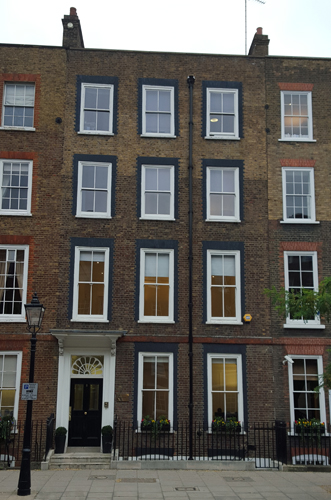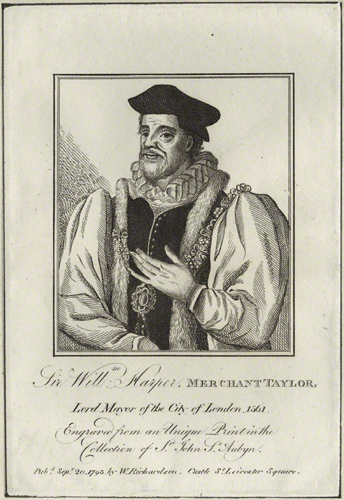
Bedford Row, which lies between Red Lion Street and Gray’s Inn, is a broad thoroughfare of the early eighteenth century. It does not derive its name, as might be imagined, from the Russell family, but from the town of Bedford, to which — his native place — Sir William Harpur, Lord Mayor of London in 1561, bequeathed the land on which it stands for the re-founding of Bedford School after the Reformation.1

Nos. 8-13 Bedford Row were built between 1717-18 by Robert Burford, carpenter, on land leased to him and George Devall2, plumber, by Margaret Skipwith in 1716. Most of the houses were altered in the 1820s. They are of brown or yellow stock brick with some refacing of upper storeys and parapets. The tiled mansard roofs are at right-angles to the street front, those to Nos 10 and 11 are slated. The houses are Grade II listed.
Each house is two rooms deep, originally with a cross passage between them but in the early nineteenth century this was incorporated into the front rooms as a buffet alcove. All have closet wings. The principal stair, which is towards the rear of the wide stair hall extends to the first floor only, with rooms over this space at upper levels.
The houses are of four storeys with basements. They are each three windows wide except for No.11 which has four windows. The windows have gauged red brick arches and dressings to flush frame sashes. The windows of No.8 were reglazed in the nineteenth century and display two-over-two rather than the original treatment of six-over-six. Brick bands at first floor level. No.8 has a wooden architraved doorcase with good carved brackets, panelled soffit to flat hood, patterned fanlight and panelled door.
The interior of No.8 has fully panelled ground floor rooms and box cornices. The entrance hall also is also fully panelled with Corinthian pilasters forming an inner arch. It has a fine open-string staircase with twisted balusters and decorated tread ends, counterpoised by a continuous dado on the other side.
I was asked to advise on appropriate paint and colours. A few years ago I had advised on No.13 Bedford Row.
Notes
Much of this has been taken from the List description.
1Harpur also bequeathed the land on which Lamb’s Conduit Street was built.
2George Devall had also been employed on the Radcliffe Camera, in Oxford.











No comments yet. Be the first!